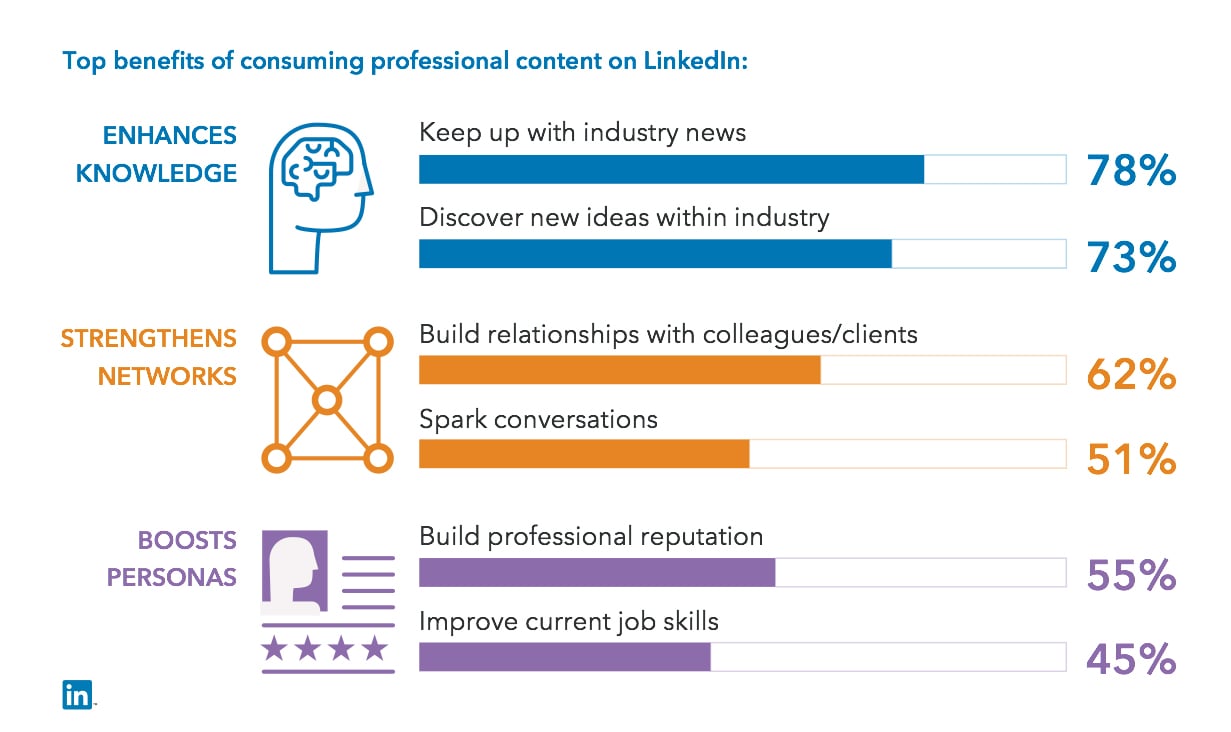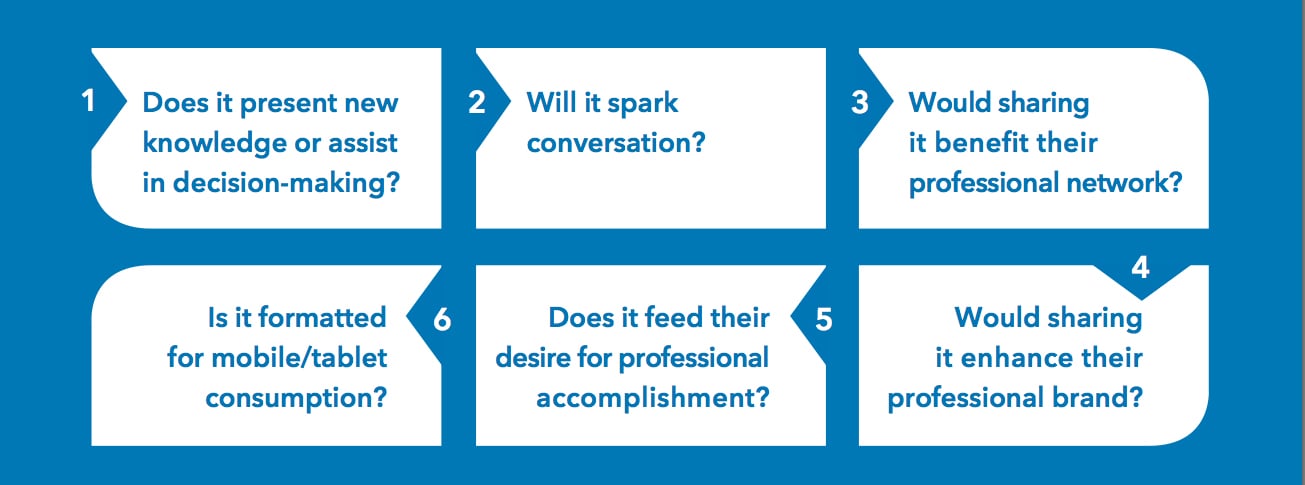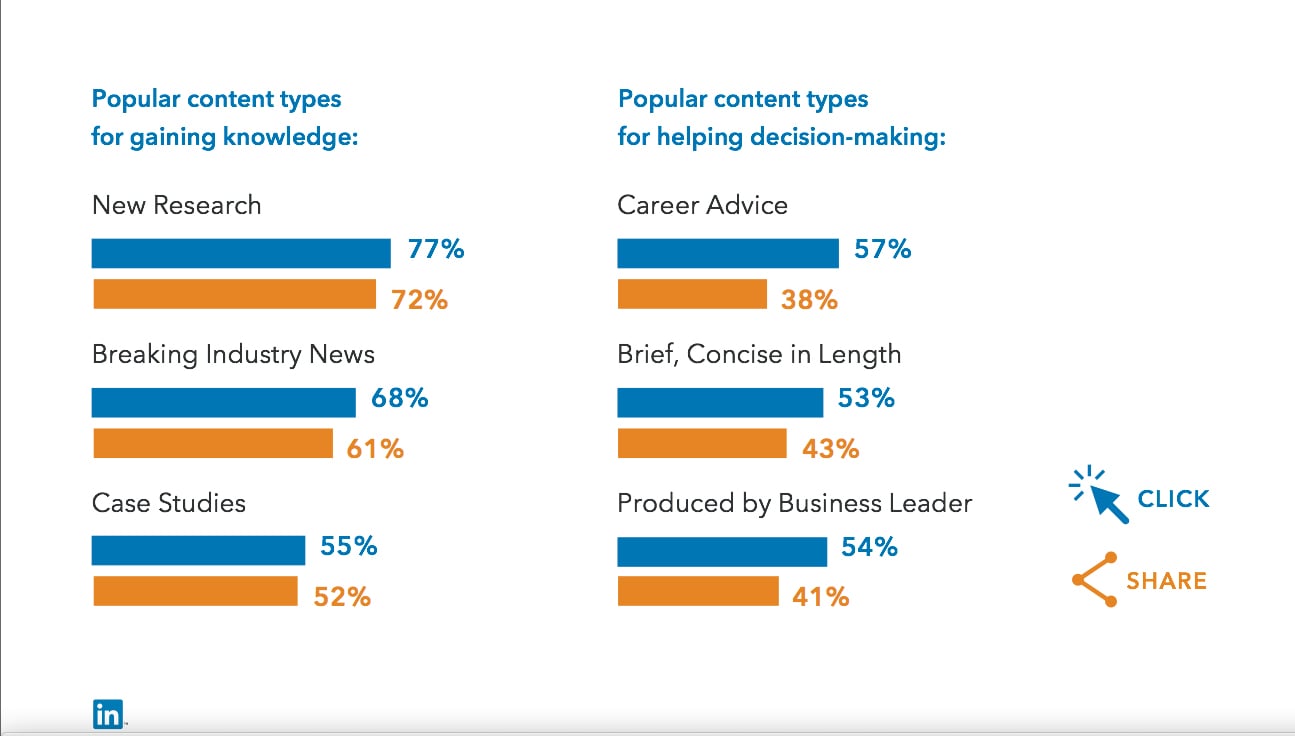In a recent post titled "Digital Marketing Strategies for Medical Device and Diagnostic Companies," Jacqueline Murray made a convincing case for why healthcare marketers should ignore social media at their peril. And now, LinkedIn has published the results of a survey of what it calls "Content Revolutionaries" that provides step-by-step instructions for how B-2-B marketers can use the LinkedIn professional networks effectively.
What's a Content Revolutionary and Why Should You Care?
According to the report, Content Revolutionaries are the early adopters, the town criers, the evangelists, the thought leaders in their professional networks. They are voracious consumers of content, spending the equivilent of up to a full day each week consuming and sharing content. They are people who consider professional content "necessary for success." Why do they feel it's necessary?

So, why should you care? Because, if you publish content that helps the Content Revolutionaries keep up with industry news or discover new ideas, they're just dying to publish it to build relationships with colleagues and build their professional reputation. And their colleagues are your customers.
Appealing to LinkedIn's Healthcare Thought Leaders
Okay, so now if you're using your push-marketing head you're thinking: "How can I get these people to share my brochure." But, your enlightened self, the one that knows that this forum is all about an exchange of informational currency overrules that and says, "What do these thought leaders value, and how can I make them see sharing my information as valuable to them?" According to LinkedIn (and we agree) you should ask yourself these six questions when thinking about what might appeal to these influential content junkies:

What Type of Content Motivates Sharing?
Okay, so clearly, the aforementioned brochure is out. But, what types of content is "in" with LinkedIn? According to LinkedIn, the most popular content on their network breaks out into two categories:
- Content types for gaining knowledge
- Content types for helping decision making

Most of these broader content categories apply to healthcare, too. But don't stop with this list. You should also consider procedural videos, white papers, videos of your KOLs' speaking at conferences, and reposting of content published by other thought leaders.
Best Practice: Craft a LinkedIn Content Marketing Strategy
Sit down with your marketing team and your healthcare marketing and branding agency and craft a strategy that:
- Leverages your existing content
- Identifies all your network opportunities (your company's, your KOLs', your partners', and industry groups, etc.)
- Calendars production of new content
- Coordinates with your inbound marketing strategy
As a marketer, you know that you need a strategic approach to do it right. But, the only thing worse than doing it wrong, is not doing it at all. If you don't have the resources to launch a full, strategic LinkedIn program, awaken your guerilla marketer, and just do something.
Identify a few pieces of existing content and publish those to as many appropriate sources as you can think of. Keep your eye out for news you can republish. Build in calls to action to capture leads and establish other metrics to assess your progress. Once you start getting some traction, you'll likely be able to demonstrate the ROI needed to get a social media budget. Build a case one "link" at a time.
If you're interested in keeping up with healthcare marketing trends like this one, subscribe to our blog.
 Julia Darden is the Branding Strategist for DardenLentz, a B2B Marketing and Branding Agency focused on healthcare and technology, and she is the firm's managing partner. Julia is passionate about building memorable brands that connect emotionally with customers. She has successfully managed major creative and branding projects for leaders in the technology, diagnostics, medical device and medical informatics industries.
Julia Darden is the Branding Strategist for DardenLentz, a B2B Marketing and Branding Agency focused on healthcare and technology, and she is the firm's managing partner. Julia is passionate about building memorable brands that connect emotionally with customers. She has successfully managed major creative and branding projects for leaders in the technology, diagnostics, medical device and medical informatics industries.



